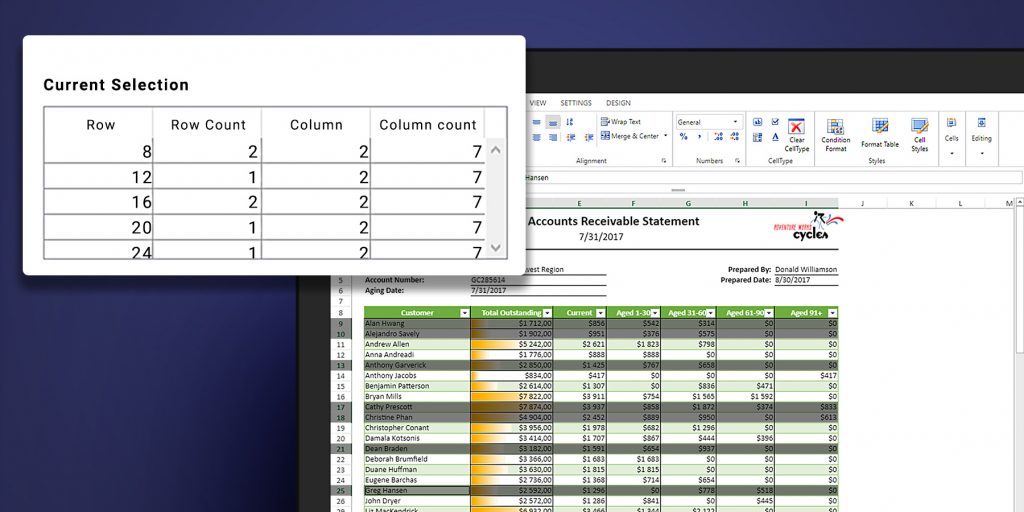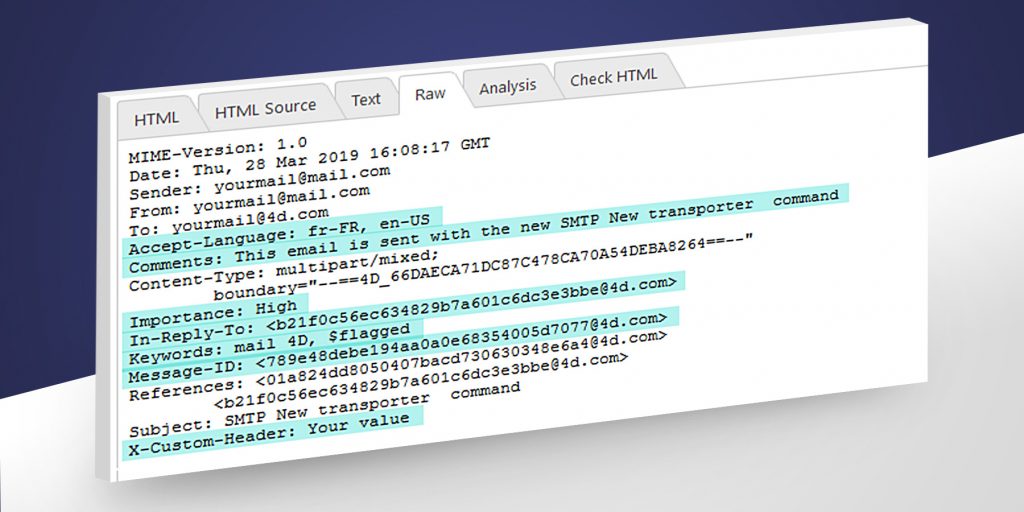ORDA member methods to get the structure information
“How can I know the dataClass of an entity? I need it to write generic methods“. “I need information about a field in a dataClass: what is its type? Is it indexed? Is it unique?“. These are the kinds of questions we’ve heard you asking on the forum. 4D v17 R5 provides the answers: introducing new ORDA member methods to provide useful information about your database. Keep reading, because you’ll appreciate the benefits of reducing the size of your code and making it reusable and easy to maintain!
UI improvements in Quick Report
The Quick Report user interface has had a small enhancement, but small things can make a big impact on the overall user experience.
4D Write Pro: a new way to set TABS!
We’re thrilled to announce an exciting enhancement in 4D Write Pro! In addition to the features we’ve rolled out so far, 4D v17 R5 also includes a new feature for tabs.
More information about web processes
You asked for more information about web processes to better identify requests that might be slowing down or blocking your server. We heard you and in 4D v17 R5, we’ve added information about the URL used by web processes. This information can be retrieved two ways: via the 4D Server Administration Window or via the 4D language with the Get process activity command.
Placeholders for attribute paths in ORDA queries
The ORDA features keep coming with 4D v17 R5! In a previous blog post, we showed you how to create generic queries with named placeholders for values. This post will focus on how to use placeholders for attribute paths (field names in tables).
Manage selections and the active cell in 4D View Pro
Typically, 4D View Pro requires that you identify the cell being worked with and where data will be entered (the active cell). You may also need to select some cells and then perform an action, such as formatting or entering values in them. 4D v17 R5 provides a new set of commands to help you manage both the active cell and cell selections.
Customize your email headers
Custom headers are useful to add information that may not be supported with standard properties. In 4D v17 R5, we’re not only giving you a set of predefined headers, but also a way to declare customized headers to the mail object.
Who’s who? A new way to identify users
As a 4D developer you often need to manage end users with your own directory system. For internal users, you might create a few profiles with different rights or you might just use the default Designer account for everyone. The problem is when multiple people use the same profile, everyone has the same name and it’s difficult – sometime impossible – to differentiate them. Fortunately, 4D v17 R5 resolves the headache of trying to figure out who’s who. In this blog post, we’ll explain a new command and new selectors that’ll help you set the 4D user identity by defining a custom name to use instead of the current 4D user account name.
4D Write Pro: Handle view properties by programming
4D Write Pro documents can be displayed in different modes (draft, page and embedded), each with their own viewing options. For example in Page view mode, you can choose to hide both the vertical and the horizontal rulers, but keep the headers and footers visible. The same goes for many other display properties such as zoom, spell check, page frames, etc. Thirteen different viewing options can be defined. The good news is that rather than handling all of these properties manually, it can now be done programmatically.
N to One relations with 4D for iOS
As of 4D v17 R5, 4D for iOS supports N to One relations so you can use descriptive relation names and simplify defining your project structure. You can visualize all of your table relations directly in the Structure section of the Project Editor.
Contact us
Got a question, suggestion or just want to get in touch with the 4D bloggers? Drop us a line!
* Your privacy is very important to us. Please click here to view our Policy










